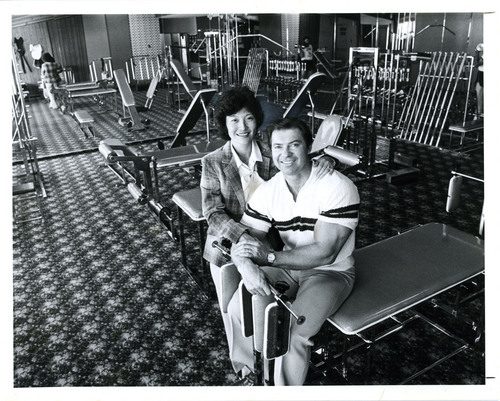This is an archived article that was published on sltrib.com in 2014, and information in the article may be outdated. It is provided only for personal research purposes and may not be reprinted.
Larry Scott, a skinny kid from Idaho who became a chiseled bodybuilder and the sport's biggest star of the mid-1960s before settling in Utah, died Saturday.
Scott's admirers included the bodybuilder turned actor and politician Arnold Schwarzenegger. On Sunday, Schwarzenegger tweeted:
Bodybuilding lost an icon today. We'll all miss the Legend, Larry Scott, a great man who inspired millions. My thoughts are with his family.
— Arnold (@Schwarzenegger) March 9, 2014
Schwarzenegger won most of the same bodybuilding contests a few years after Scott. Scott called Schwarzenegger a friend.
With 20-inch biceps (the average for a man is 13), pectorals that looked like hindquarters on a thoroughbred, a washboard stomach and a grin worthy of a television star, Scott's influence spread beyond competitive bodybuilding. A weight lifting technique called the Scott Curl, sometimes called the Preacher Curl, is named for him and used by anyone wanting better-looking arms.
The technique requires placing one or both arms at the top of an inclined bench, extending the arm or arms down to full extension and lifting the weight up again. Scott credited the exercise with helping him build his biceps, which were often described as shaped like footballs.
Larry Dee Scott was born Oct. 12, 1938, in Pocatello, Idaho, to Wayne and Thea Scott. His father was a machinist. At age 16, the younger Scott was 5 feet 8 inches tall and weighed 120 pounds.
At the city dump, he found a bodybuilding magazine. Scott took it home and started exercising in the back yard. His first barbell was a tractor axle he used for doing curls and presses.
"At first, I thought those muscle men looked ridiculous and overdone," Scott told The Tribune in 1979. "The advertisement [in that first magazine] said, 'You, too, can have arms like these.' It blew my mind."
Four years later, he won the Mr. Idaho contest. He moved to California, continued lifting and entering contests while also working in a southern California bike repair shop. In 1960, he won the Mr. California title and won Mr. Pacific Coast the following year.
Then in 1963, Scott began started conquering the biggest bodybuilding events in the world. That year he won first place in the medium division at Mr. Universe. He won it again in 1964 and also took first-place overall.
Then in 1965, Joe Weider, the bodybuilder and entrepreneur, staged the first Mr. Olympia contest at the Brooklyn Academy of Music in New York City. Scott entered as bodybuilding's biggest superstar and didn't disappoint. He won the inaugural event. He won Mr. Olympia again in 1966.
The bodybuilding contests brought him notoriety and money. He was driving a Porsche in Los Angeles when he spotted a Rachel Ichikawa on a street corner. He made a U-turn and approached her. The couple married Oct. 29, 1966.
She survives him as do three of the couple's children: a daughter, Susan Scott; and two sons Erin, and Nathan Scott. One son, Derek Scott, died in a motorcycle accident in 1992. Another son, Michael Scott, died the next year.
Scott retired not long after winning Mr. Olympian in 1966, but in 1978, a few weeks short of his 40th birthday, Schwarzenegger invited Scott to pose at that year's Mr. Olympian contest. Scott received a six-minute ovation.
The next year, Scott began training for a comeback. By then his weight lifting was a family exercise. His wife Rachel cooked him separate meals that he'd wash down with a protein shake and wheat bread with honey substituted for sugar. His children rarely received candy or other treats. A Mormon who would fast on Sunday, it would take Scott three or four days to gain the weight back.
But Scott couldn't regain his success. Injuries hampered his regimen. He took ninth place in one Canadian contest and did not place in another, according to Scott's website.
By then he had other interests. He ran a mail-order bodybuilding program and later owned his own store selling supplements to generations of bodybuilders who recognized his name. He went on to own multiple gyms and spas in Utah.
More than once, Scott heard someone call him a freak. But Scott found peace in exercise and the body.
"Bodybuilding is like hearing a symphony," Scott told The Tribune in 1979. "The more you hear, the more you know, the more you enjoy. To see and appreciate a beautiful male body at its peak takes education."
ncarlisle@sltrib.com
Twitter: @natecarlisle



